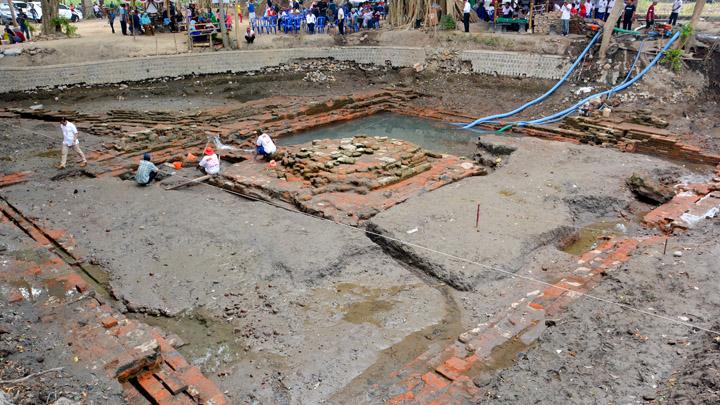
TEMPO.CO, Jakarta - Back from school, 10-year-old Kadek Ardika immediately went to work on his piece of silver ore, forging it into small sticks, flattening them, cutting them into smaller pieces and crafting them into little balls. Later, the balls will be made into different kinds of ornaments, like pendants, necklaces and bracelets with jawan motifs a motif unique to silver-crafting at Celuk village, Sukawati in Gianyar, Bali.
Ardika, a fifth-grader, belongs to the youngest generation of Celuk villagers who are being trained in silvercrafting. Although sales of silver ornaments are currently in a slump, Ardika is lucky that her grandfather, Wayan Suweta, 67, remains enthusiastic about teaching the skill that has been passed down through generations for hundreds of years.
"Three months ago, I opened a special class for silvercrafting so the young generation over here can learn about their origins," said Suweta, owner of the Bali Silver Class. Suweta's course has only four students who come to him after school hours or during holidays.
Admittedly, without Suweta's innovative idea, Celuk village known as a center for silver handicrafts could easily become a has-been art center. Recently, many of Celuk's craft have remained unsold. Traders who came to buy wholesale items and tourists to seek souvenirs have not been showing up anymore. It was as if the shine of silver has suddenly vanished over Celuk, which was known as one of Bali's prized destination.
Once upon a time, Celuk, a village covering 247.56 hectares of land, was the place to buy Bali silver crafts. Every day, Celuk used to produce varieties of silver handcrafts, from simple motifs to gold-plated ornaments with prices ranging from hundreds of thousands to millions of rupiah.
Celuk started producing silver crafts around 1915. At that time, a resident by the name of Nyoman Gusti of the Pande clan got to learn about the art of silver craft in the kingdom of Mengwi in Badung.
After some time, he went home and taught what he had learnt to members of his family and his neighbors. The crafts he produced were still limited to those intended for use at rituals and religious ceremonies, and ornaments only for the nobles of the Ubud and Sukawati royal houses. There were unique traditional shapes, like the bokoran, the sangku, the caratan, handles of kris (traditional dagger) and accessories to adorn attire.
In 1935, silver artisans in Celuk joined with the Pita Maha Association of Artists in Ubud which had its home base at Puri Peliatan. Aside from being assisted by the ruler of Ubud, this association was also advised by Rudolf Bonnet, a Dutch artist. This helped the artists to develop and enhance their creativity, enabling them to better sell their masterpieces.
A big step was taken in 1952 when Wayan Regeg opened the first art shop under the name Sura. The brand name was taken from his first-born son, I Wayan Sura. This was actually a daring step, given that only a small number of tourists visited Bali at that time. They came by cruise ships, anchored off Buleleng. As for accomodation, there was only one at Denpasar, the Bali Hotel. Regeg's pioneering move was later followed by other local artisans who opened similar art shops, although they targetted local people who wore the ornaments for customary and religious rituals.
This came to a sudden halt after the 1965 political turbulence, marked by massacres in Bali. "There were killings and the situation became very scary," said Made Kitha, 67, a community leader at Celuk village. "The people's economy was a mess and production of silver crafts stop." (*)
Read more inspiring Outreach stories in Tempo English Weekly News Magazine























